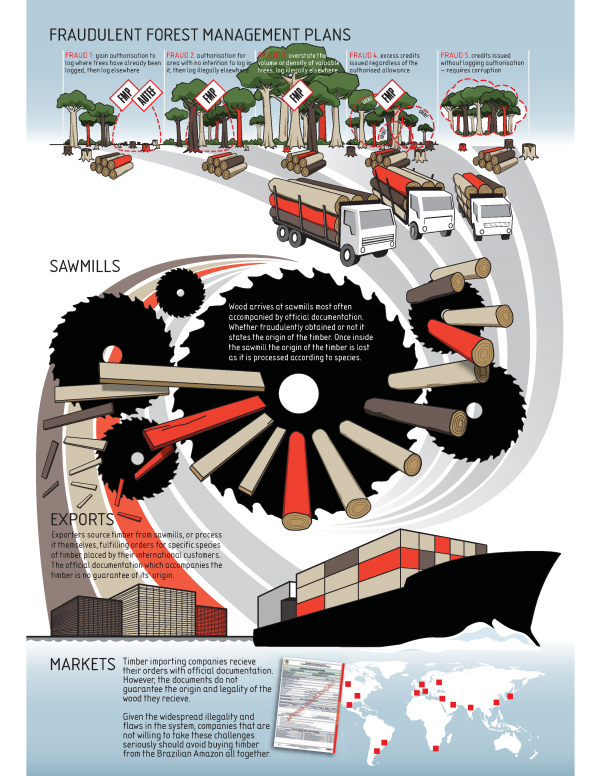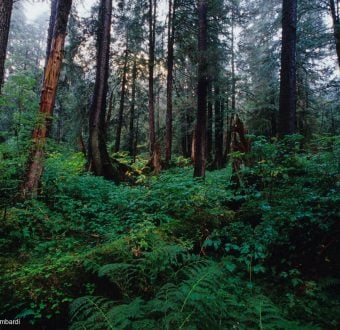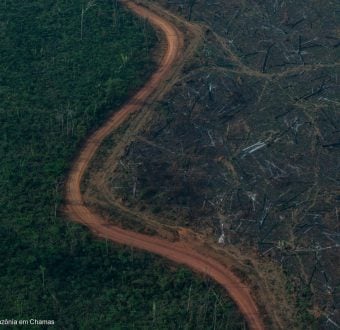While following up on this past October’s illegal logging investigation, Night Terrors, in which activists, with covertly-placed GPS devices, tracked the movements of trucks carrying illegal timber, Greenpeace has discovered that a large private forest estate, Santa Efigenia, had flooded the market with large amounts of laundered illegal timber. This one property had sold up to 18 million board feet of timber, including 5.1 million board feet of the trendy construction material ipê which would be worth around 7 million USD in the decking market.
Last October’s investigation illustrated how illegal timber was easily laundered through the fundamentally flawed Pará State timber control system. Timber arrived at sawmills with legal documentation that disguised the timber’s actual ilicit origins. In Brazil, it is very easy to manipulate the system and fabricate the legal documentation that grants timber merchants permission to trade volumes of timber. The pervasiveness of the fraud helps explain why it is possible that 78% of logging in Pará could be illegal. For buyers hoping to comply with the requirements under the US Lacey Act, the official documentation paperwork, on its own, does not offer assurances that the timber is legal. While Greenpeace activists had witnessed, in real time with GPS trackers, that timber was leaving unauthorized areas, the official paperwork accompanying the illegal timber had claimed that it came “legally” from Santa Efigenia, a property whose owners had also been accused of embezzling millions of dollars of public funds from local economic development agencies. So what was actually happening at Santa Efigenia?
Blatant lies for large scale laundering
The logging plans at Santa Efigenia exaggerated the volumes of highly valued timber species on the property and the Pará State authorities rubber stamped permission to “harvest” vast quantities of this timber for sale. Greenpeace had outlined this sort of fraud before, a year ago, in The Silent Crisis, but what makes Santa Efigenia novel is just how blatant the fraud was.
Santa Efigenia declared occurrences of valuable species that were biologically implausible. Greenpeace commissioned a study with one of the leading universities in Brazil, Universidade de São Paulo, and found that the number of ipê trees claimed by Santa Efigenia, over 1,800 individual trees, was four times the normal rate of typical natural occurrence of the species in the region. These 1,800 ipê trees were not just abundant, but they were also well-endowed, Santa Efigenia also claimed an extremely large volume of ipê per hectare, 13 times more cubic meters of ipê than what is found naturally in the region. This sort of anomaly conjures up images of the fairy tale Jack and the Beanstalk.
US Companies Implicated
This case demonstrates the extent to which the Pará State timber control system can be manipulated and that the documentation the system is based on is not able to reveal the true origins of the state’s timber. In order to satisfy the US Lacey Act’s Due Care requirements that force importers to scrutinize their sources and the timber they buy, US importers need to look beyond the paperwork when purchasing timber from the Brazilian Amazon. US importers of Amazon Timber are implicated in this case study. Over 95% of the timber processed at two specific saw mills was claimed, on paper, to have ‘come from’ Santa Efigenia. These two saw mills sold laundered illegal timber to exporters that supply US companies Sabra International, East Teak Hardwoods, Timber Holdings USA, Redwood Empire, Aljoma Lumber, Logan Lumber Company, San Jose Forest Products, Eco Trade LLC, Universal Forest Products, and Robinson Lumber. A good number of these companies, including East Teak Hardwoods and Sabra International, were already named in last year’s Amazon timber investigation.
Origin: Unknown?
There is no definitive proof of where the laundered timber actually originates, especially considering that the legal documentation cannot prove traceability, but there are suspicions. Santa Efigenia is located only about 18 miles from the Cachoeira Seca Indigenous territory, which has experienced a massive amount of invasions by illegal loggers in recent years (see above picture). A road runs through Santa Efigenia and continues through Cachoeira Seca. Over 30,000 acres of Cachoeira Seca have been degraded by loggers and over 400 miles of roads have been cleared within the area, presumably to transport illegal timber. Massive amounts of illegal timber from this area needed to be laundered in order to be commercialized and Santa Efigenia was a conveniently located large-scale launderer.
Download the investigation here.




